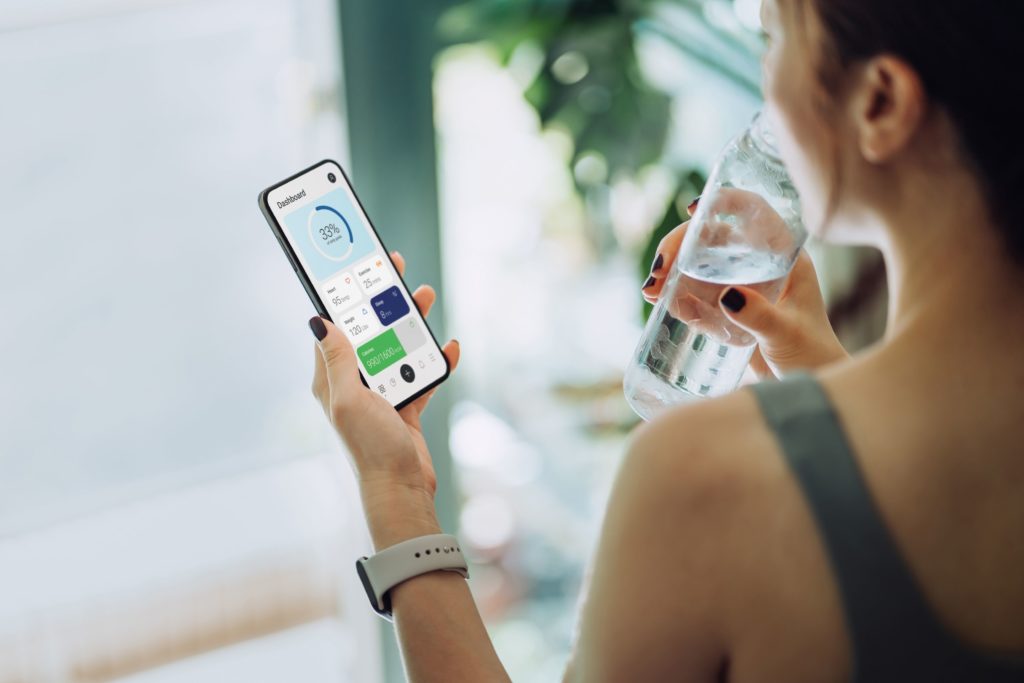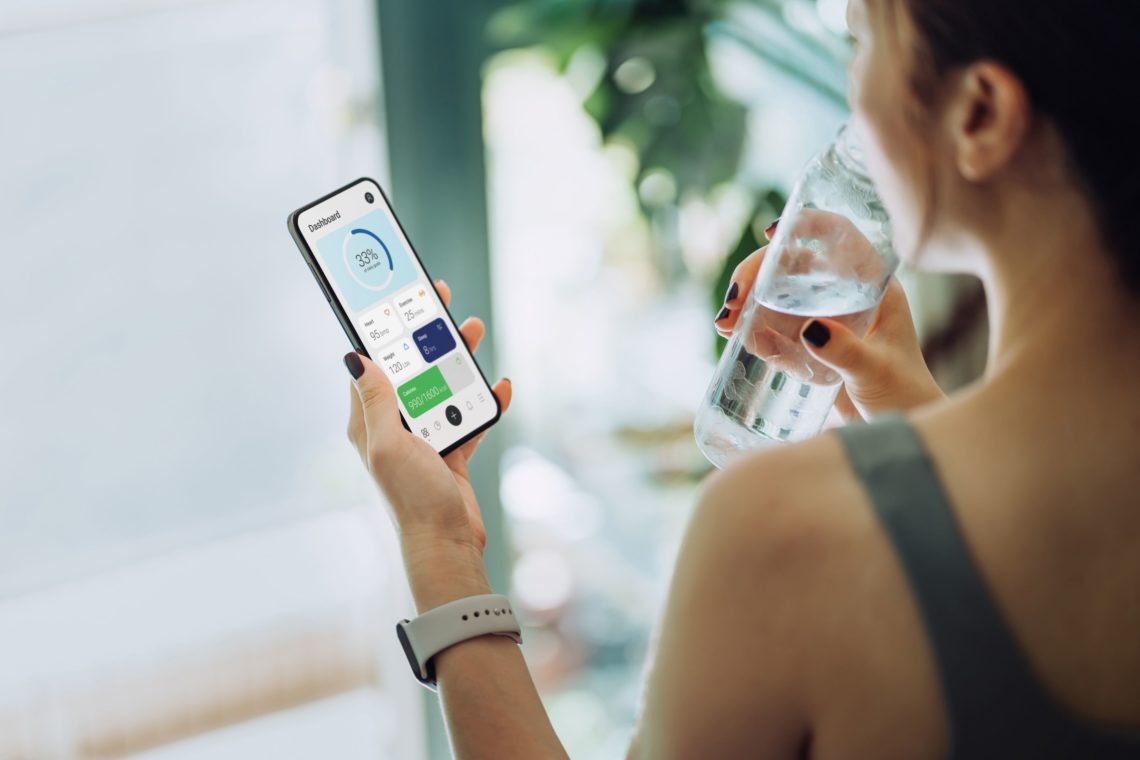
Marketers of health & wellness apps can interact with their clients at every stage of the customer lifecycle by using automated messages. Relevant messages are automatically supplied in real time across the app users’ preferred channels based on each user’s individual trip. New users become engaged with the app, become activated users, and eventually become paying customers – all as a result of prompted push alerts, in-app messages, and emails.
Do you want to spend less time and effort on client interaction while getting better results? Check out these 10 communication situations that we advise health and wellness apps to automate.
- Automated Onboarding of Users
The significance of your initial conversations with a new consumer cannot be overstated. In this situation, your ability to make it (=move the newbie through the sales funnel) or break it (=lose the hard-won customer on Day 1) depends on the initial impression.
Metrics at risk include activation rate, app adoption rate, D1 retention, and even customer LTV (which has been shown to increase by up to 300% with good onboarding).
Useful channels are Use in-app messages, emails, and push alerts to become omnichannel.
How to design an app with a comparable onboarding process:
1. Commence communication at the event where your account is registered
2. Plan a sequence of sequential in-app messages, and then ask any questions that will help you customise your new user’s experience and keep them using the app. You might also want to highlight your app’s best features and let users know what awaits them after onboarding is complete.
3. Watch for the Activation Action event to be fired. From this point, you can divide the flow into two:
4. Identify the individuals who have been activated successfully by tagging them. Through your regular communications in other messaging channels, you will continue to communicate with them
5. Re-establish contact with everyone who hasn’t concluded the activation process. The best channels to remind users to complete any information missing from their profiles and complete the action you consider as an activation one are push notifications and emails (e.g. take their first training session in your app).
- Opt-In: Obtaining Subscribers
One of the most important metrics for app marketers is the opt-in rate. The success of your marketing communications greatly depends on the number of subscribers you have.
Show in-app messages to new users outlining the advantages of receiving your alerts in order to persuade more users to opt in for receiving your pushes (particularly on iOS).
Additionally, provide consumers the option to select the subjects they want to get updates on. By doing this, people will be able to recognise the value your messages have for them particularly and be assured that you won’t bombard them with pointless information.
How to convince users to choose to get push notifications from your app:
1 – Pay attention to consumers who have just installed your app.
2. Display an in-app message encouraging users to sign up for push notification reminders.
3 Tag users who have chosen to receive push notifications at a certain time.
4 Give individuals who haven’t opted in one more chance by displaying the opt-in message to them once more the next time they access your app.
5 Tag everyone who has chosen to participate at this point and complete the adventure.
- Establish a Regular Routine for Using Your Health & Wellness App by Setting Reminders.
You must attempt to get users back to your app frequently if you want them to remain interested and active.
The best action you can take is to make utilising your health & wellness app a (good) habit. You can complete this task with the aid of automated communications.
Metrics at risk include session duration (which may be determined by the last time the app was opened), DAU, MAU, stickiness, D7 and D30 retention, and indirectly — paid subscription conversion.
Useful channels: emails and push notifications
How to develop the practise of utilising your health and wellness app:
Target users who have chosen to receive push notifications (generally) or who have chosen to receive reminders at a specific time of day.
Give them an opportunity to open your app without receiving a reminder in step two. Send them a push notification if, after the time you choose, they haven’t activated the App Open event.
Using the Scheduled Launch option, you may set the journey to repeat every day.
- Maintain User Engagement with Custom Event-Triggered Messaging
The beautiful thing about selling a health and wellness app is that you can learn a lot about your customers, including their recent moods, adherence to a diet, and other details.
This only implies one thing to a communication specialist: they can craft highly customised messages and send them at the most appropriate time!
Measures at risk DAU, MAU, retention rates, push notification/in-app message/email CTRs (short-term),
How to use automated message to reply to any form of in-app user activity:
1 Speak to everyone who has downloaded and used your app today.
2 Watch for them to perform the desired action in the application; in the case of VOS, this will be creating a journal entry.
3 Send a push notice with an appropriate response to the action made. Users should be encouraged to utilise your app and finish another task.
4 Get the user back to the app with a push referencing the first target action if they haven’t already done so.
5 Keep count of the number of users you’ve managed to draw in. You can further distinguish your communications, tag people in accordance with the actions they have taken (or not taken), or just cut the journey short at that point.
- Make Automated Service Messages Better for the User Experience
Sending consumers individualised notifications about the activities they’ve joined up for is another method to keep them interested. Communications of this nature will resemble service messages and demand more sophisticated tailoring.
Metrics at risk include the live event attendance rate, session intervals, DAU, MAU, D7, and D30 retention.
How to automatically email users of your health & wellness app event reminders:
- Aim your advertising at users who have registered for a specific activity, like in the case of the live yoga class mentioned earlier.
2: One hour prior to the event’s start, schedule a push notification to go out. - Prepare for two potential communication scenarios:
- for users who have opened your push notification, confirm that they attend the event; – for users who haven’t opened the push notification, send them an additional email reminder 30 minutes before the event begins. As soon as that happens, see if they join the action.
For you to evaluate the efficiency of your communication channels and gauge the turnout for the tracked event, Unomok Customer Journey Builder will collect statistics at each stage.
6. Re-Involve Inactive Users to Reduce Churn
If you can’t keep new users engaged and engaged, all of your user acquisition efforts are useless. Emails and push notifications can help you out in this situation. These avenues of communication are excellent at keeping users and reducing churn.
Metrics at risk include app open/session interval, DAU, MAU, time spent using the app, number of app launches, screen opens, and user LTV.
How to get people back on your health and wellness app:
- Concentrate your efforts on users who haven’t been active in a while. When configuring the beginning Event, you may select the required amount of inactive days.
2 Send a user-returning push notice to help them get back on track.
3 – Watch for the App Open event to be fired off.
4 Send another re-engagement message if the event wasn’t cancelled.
7. Encourage feature adoption and exploration
You can raise user satisfaction with your product and your KPIs by emphasising your most recent upgrades and outlining how the less-used features can help your audience.
Metrics at risk include the feature’s adoption rate, time to adoption, DAU, and MAU.
How to use automated communications to promote the use of new features and products:
1 Choose “all users” as your target demographic.
2.Hold off till they open your app again. When they do, present them with an in-app message encouraging them to attempt a new function.
3. Message a user via push notification if they haven’t launched the app. Then, you should display the same in-app to them along with information about the new function.
Just to refresh your memory, you may view the statistics for each step immediately after in the Unomok user interface.
- Increase Premium for Free Users
Obviously, the ultimate purpose of any marketing communications is to increase income. Apps for health and wellness can increase their revenue by upselling its customers to more expensive subscription options.
You may quickly target upgrade offers with automated messages to people who have recently finished their free trials or have been exclusively utilising your free services. Additionally, you will be able to precisely track the success of these exchanges with Unomok.
Conversion rates, the number of paying users, total revenue, MRPPU, and LTV are the metrics at risk.
How to use automated messages to upgrade app users to a premium subscription:
1 Begin by concentrating on all of your free users.
2 Await their opening of your application or, more precisely, their viewing of a specific screen.
3 Display an upgrade offer in an in-app message if they have already done so.
4 Show them a push notification tempting them to accept the upgrade offer if they haven’t accessed your app or a certain screen.
5 If they clicked the push, show them a more detailed in-app.
6 Send an email with an upgrade offer if they haven’t clicked on the push notification.
7 Keep track of the number of advancements you receive from each conversation situation.
- Encourage referrals and advertise loyalty programmes
Your brand’s recognition will increase thanks to loyalty and referral programmes, which also diversify your revenue sources. Rewarding your current consumers with unique incentives and coupon codes is one possibility. Another choice is to increase your user base by allowing your users to personally recommend you to their loved ones.
Metrics at risk include customer lifetime value (LTV), app user totals, and retention rates.
Here’s how to create a campaign for a loyalty or referral programme; we’ll develop an example flow for that kind of referral promo:
1 Pick your whole paid subscriber base as your target audience.
2 Send them an email outlining the referral terms without requiring them to take any specific actions in your app.
3 Keep track of how many times your promotional code has been used, or more specifically, how many new users have downloaded your software.
